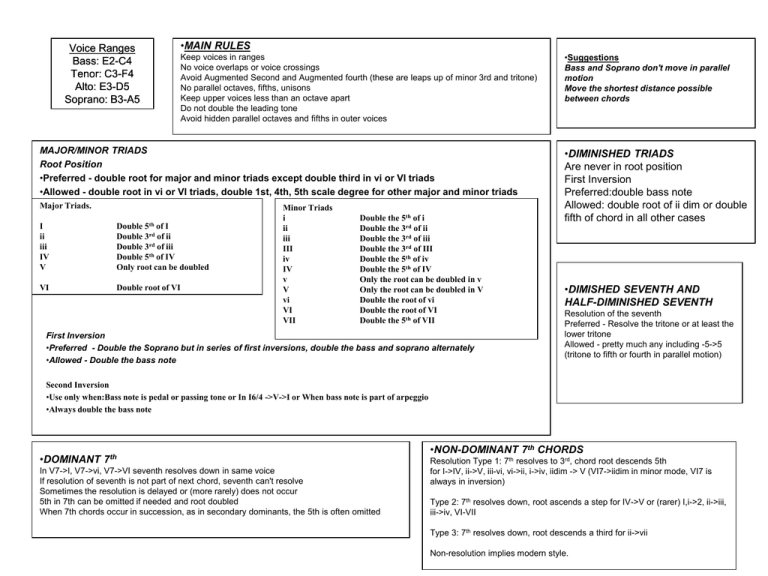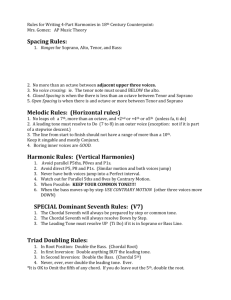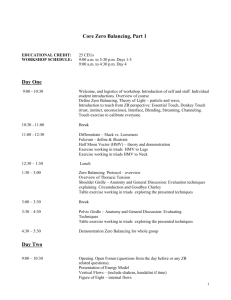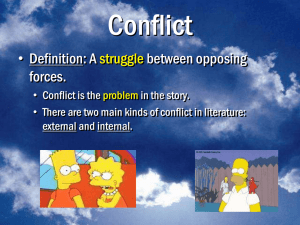Voice Ranges Bass: E2-C4 Tenor: C3-F4 Alto: E3-D5 Soprano: B3-A5
advertisement

Voice Ranges Bass: E2-C4 Tenor: C3-F4 Alto: E3-D5 Soprano: B3-A5 •MAIN RULES Keep voices in ranges No voice overlaps or voice crossings Avoid Augmented Second and Augmented fourth (these are leaps up of minor 3rd and tritone) No parallel octaves, fifths, unisons Keep upper voices less than an octave apart Do not double the leading tone Avoid hidden parallel octaves and fifths in outer voices MAJOR/MINOR TRIADS Root Position •Preferred - double root for major and minor triads except double third in vi or VI triads •Allowed - double root in vi or VI triads, double 1st, 4th, 5th scale degree for other major and minor triads Major Triads. I ii iii IV V Double 5th of I Double 3rd of ii Double 3rd of iii Double 5th of IV Only root can be doubled VI Double root of VI Minor Triads i ii iii III iv IV v V vi VI VII Double the 5th of i Double the 3rd of ii Double the 3rd of iii Double the 3rd of III Double the 5th of iv Double the 5th of IV Only the root can be doubled in v Only the root can be doubled in V Double the root of vi Double the root of VI Double the 5th of VII First Inversion •Preferred - Double the Soprano but in series of first inversions, double the bass and soprano alternately •Allowed - Double the bass note •Suggestions Bass and Soprano don't move in parallel motion Move the shortest distance possible between chords •DIMINISHED TRIADS Are never in root position First Inversion Preferred:double bass note Allowed: double root of ii dim or double fifth of chord in all other cases •DIMISHED SEVENTH AND HALF-DIMINISHED SEVENTH Resolution of the seventh Preferred - Resolve the tritone or at least the lower tritone Allowed - pretty much any including -5->5 (tritone to fifth or fourth in parallel motion) Second Inversion •Use only when:Bass note is pedal or passing tone or In I6/4 ->V->I or When bass note is part of arpeggio •Always double the bass note •DOMINANT 7th In V7->I, V7->vi, V7->VI seventh resolves down in same voice If resolution of seventh is not part of next chord, seventh can't resolve Sometimes the resolution is delayed or (more rarely) does not occur 5th in 7th can be omitted if needed and root doubled When 7th chords occur in succession, as in secondary dominants, the 5th is often omitted •NON-DOMINANT 7th CHORDS Resolution Type 1: 7th resolves to 3rd, chord root descends 5th for I->IV, ii->V, iii-vi, vi->ii, i->iv, iidim -> V (VI7->iidim in minor mode, VI7 is always in inversion) Type 2: 7th resolves down, root ascends a step for IV->V or (rarer) I,i->2, ii->iii, iii->iv, VI-VII Type 3: 7th resolves down, root descends a third for ii->vii Non-resolution implies modern style.











